DATOaseantourguide@GMAIL.COM
PHOTOS BY CANON
Delft
Delft | |
|---|---|
City and municipality | |
 A view of Delft with the Oude Kerk in the centre | |
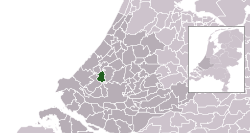 Location in South Holland | |
| Coordinates: 52°0′42.25″N 4°21′33.15″ECoordinates: 52°0′42.25″N 4°21′33.15″E | |
| Country | Netherlands |
| Province | |
| City Hall | Delft City Hall |
| Government | |
| • Body | Municipal council |
| • Mayor | Marja van Bijsterveldt (CDA) |
| Area | |
| • Total | 24.06 km2 (9.29 sq mi) |
| • Land | 22.82 km2 (8.81 sq mi) |
| • Water | 1.24 km2 (0.48 sq mi) |
| Elevation | 0 m (0 ft) |
| Population (August 2017)[4] | |
| • Total | 101,400 |
| • Density | 4,443/km2 (11,510/sq mi) |
| Demonym(s) | Delftenaar |
| Time zone | UTC+1 (CET) |
| • Summer (DST) | UTC+2 (CEST) |
| Postcodes | 2600–2629 |
| Area code | 015 |
| Website | www |
Delft ([dɛlft] ( listen)) is a city and municipality in the province of South Holland, Netherlands. It is located between Rotterdam, to the southeast, and The Hague, to the northwest. Together with them, it is part of both Rotterdam–The Hague metropolitan area and the Randstad.
listen)) is a city and municipality in the province of South Holland, Netherlands. It is located between Rotterdam, to the southeast, and The Hague, to the northwest. Together with them, it is part of both Rotterdam–The Hague metropolitan area and the Randstad.
Delft is a popular tourist destination in the country of The Netherlands. It is home to Delft University of Technology (TU Delft), regarded as center of technological research and development in the Netherlands, Delft Blue pottery and the currently reigning House of Orange-Nassau. Historically, Delft played a highly influential role in the Dutch Golden Age.[5][6][7][8] Delft has a special place in the history of microbiology. In terms of science and technology, thanks to the pioneering contributions of Antonie van Leeuwenhoek[9][10] and Martinus Beijerinck,[11] Delft can be considered to be the true birthplace of microbiology, with its several sub-disciplines such as bacteriology, protozoology, and virology.
Contents
History[edit]
Early history[edit]
The city of Delft came into being beside a canal, the 'Delf', which comes from the word delven, meaning to delve or dig, and this led to the name Delft. At the elevated place where this 'Delf' crossed the creek wall of the silted up river Gantel, a Count established his manor, probably around 1075. Partly because of this, Delft became an important market town, the evidence for which can be seen in the size of its central market square.
Having been a rural village in the early Middle Ages, Delft developed into a city, and on April 15, 1246, Count Willem II granted Delft its city charter. Trade and industry flourished. In 1389 the Delfshavensche Schie canal was dug through to the river Maas, where the port of Delfshaven was built, connecting Delft to the sea.
Until the 17th century Delft was one of the major cities of the then county (and later province) of Holland. In 1400, for example, the city had 6,500 inhabitants, making it the third largest city after Dordrecht (8,000) and Haarlem (7,000). In 1560, Amsterdam, with 28,000 inhabitants, had become the largest city, followed by Delft, Leiden and Haarlem, which each had around 14,000 inhabitants.
In 1536 a large part of the city was destroyed by the great fire of Delft.
The town's association with the House of Orange started when William of Orange (Willem van Oranje), nicknamed William the Silent (Willem de Zwijger), took up residence in 1572 in the former Saint-Agatha convent (subsequently called the Prinsenhof). At the time he was the leader of growing national Dutch resistance against Spanish occupation, known as the Eighty Years' War. By then Delft was one of the leading cities of Holland and it was equipped with the necessary city walls to serve as a headquarters. An attack by Spanish forces (Battle of Delft) in October of that year was repelled.
After the Act of Abjuration was proclaimed in 1581, Delft became the de facto capital of the newly independent Netherlands, as the seat of the Prince of Orange.
When William was shot dead on July 10, 1584 by Balthazar Gerards in the hall of the Prinsenhof (now the Prinsenhof Museum), the family's traditional burial place in Breda was still in the hands of the Spanish. Therefore, he was buried in the Delft Nieuwe Kerk (New Church), starting a tradition for the House of Orange that has continued to the present day.
Around this time, Delft also occupied a prominent position in the field of printing.
A number of Italian glazed earthenware makers settled in the city and introduced a new style. The tapestry industry also flourished when famous manufacturer François Spierincx moved to the city. In the 17th century, Delft experienced a new heyday, thanks to the presence of an office of the Dutch East India Company (VOC) (opened in 1602) and the manufacture of Delft Blue china.
Delft Explosion[edit]
The Delft Explosion, also known in history as the Delft Thunderclap, occurred on 12 October 1654[12] when a gunpowder store exploded, destroying much of the city. Over a hundred people were killed and thousands were wounded.
About 30 tonnes (29.5 long tons; 33.1 short tons) of gunpowder were stored in barrels in a magazine in a former Clarist convent in the Doelenkwartier district, where the Paardenmarkt is now located. Cornelis Soetens, the keeper of the magazine, opened the store to check a sample of the powder and a huge explosion followed. Luckily, many citizens were away, visiting a market in Schiedam or a fair in The Hague.
Today, the explosion is primarily remembered for killing Rembrandt's most promising pupil, Carel Fabritius, and destroying almost all of his works.
Delft artist Egbert van der Poel painted several pictures of Delft showing the devastation.
The gunpowder store was subsequently re-housed, a 'cannonball's distance away', outside the city, in a new building designed by architect Pieter Post.
Sights[edit]
The city centre retains a large number of monumental buildings, while in many streets there are canals of which the banks are connected by typical bridges,[13] altogether making this city a notable tourist destination.[14]
Historical buildings and other sights of interest include:
- Oude Kerk (Old Church). Buried here: Piet Hein, Johannes Vermeer, Anthony van Leeuwenhoek.
- Nieuwe Kerk (New Church), constructed between 1381 and 1496. It contains the Dutch royal family's burial vault which, between funerals, is sealed with a 5,000 kg (11,023 lb) cover stone.
- A statue of Hugo Grotius created by Franciscus Leonardus Stracké in 1886, located on the Markt near the Nieuwe Kerk.
- The Prinsenhof (Princes' Court), now a museum.[14]
- City Hall on the Markt.
- The Oostpoort (Eastern gate), built around 1400. This is the only remaining gate of the old city walls.
- The Gemeenlandshuis Delfland, or Huyterhuis, built in 1505, which has housed the Delfland regional water authority since 1645.
- The Vermeer Centre in the re-built Guild house of St. Luke.
- The historical "Waag" building (Weigh house).
- Windmill De Roos, a tower mill built c.1760. Restored to working order in 2013.[15] Another windmill that formerly stood in Delft, Het Fortuyn, was dismantled in 1917 and re-erected at the Netherlands Open Air Museum, Arnhem, Gelderland in 1920.
Culture[edit]
Delft is well known for the Delft pottery ceramic products[14] which were styled on the imported Chinese porcelain of the 17th century. The city had an early start in this area since it was a home port of the Dutch East India Company. It can still be seen at the pottery factories De Koninklijke Porceleyne Fles (or Royal Delft) and De Delftse Pauw, while new ceramics and ceramic art can be found at the Gallery Terra Delft.[16]
The painter Johannes Vermeer (1632–1675) was born in Delft. Vermeer used Delft streets and home interiors as the subject or background in his paintings.[14] Several other famous painters lived and worked in Delft at that time, such as Pieter de Hoogh, Carel Fabritius, Nicolaes Maes, Gerard Houckgeest and Hendrick Cornelisz. van Vliet. They were all members of the Delft School. The Delft School is known for its images of domestic life and views of households, church interiors, courtyards, squares and the streets of Delft. The painters also produced pictures showing historic events, flowers, portraits for patrons and the court as well as decorative pieces of art.
Delft supports creative arts companies. From 2001 the Bacinol, a building that had been disused since 1951, began to house small companies in the creative arts sector.[citation needed] However, demolition of the building started in December 2009, making way for the construction of the new railway tunnel in Delft. The occupants of the building, as well as the name 'Bacinol', moved to another building in the city. The name Bacinol relates to Dutch penicillin research during WWII.
Education[edit]
Delft University of Technology (TU Delft) is one of four universities of technology in the Netherlands.[17] It was founded as an academy for civil engineering in 1842 by King William II. Today well over 21,000 students are enrolled.[18]
The UNESCO-IHE Institute for Water Education, providing postgraduate education for people from developing countries, draws on the strong tradition in water management and hydraulic engineering of the Delft university.
Economy[edit]
In the local economic field essential elements are:
- education; (amongst others Delft University of Technology) (As of 2017 21.651 students and 4.939 full-time employees),
- scientific research; (amongst others "TNO" Netherlands Organisation for Applied Scientific Research), Stichting Deltares, Nederlands Normalisatie-Instituut, UNESCO-IHE Institute for water education, Technopolis Innovation Park;
- tourism; (about one million registered visitors a year),
- industry; (DSM Gist Services BV, (Delftware) earthenware production by De Koninklijke Porceleyne Fles, Exact Software Nederland BV, TOPdesk, Ampelmann)
- retail; (IKEA (Inter IKEA Systems B.V., owner and worldwide franchisor of the IKEA Concept, is based in Delft), Makro, Eneco Energy NV).
Nature and recreation[edit]
East of Delft lies a relatively large nature and recreation area called the "Delftse Hout" ("Delft Wood").[19] Through the forest lie bike, horse-riding and footpaths. It also includes a vast lake (suitable for swimming and windsurfing), narrow beaches, a restaurant, and community gardens, plus camping ground and other recreational and sports facilities. (There is also a facility for renting bikes from the station.)
Inside the city, apart from a central park, there are several smaller town parks, including "Nieuwe Plantage", "Agnetapark", "Kalverbos". There is also the Botanical Garden of the TU and an arboretum in Delftse Hout.
Notable people[edit]
Delft was the birthplace of:
Before 1900
- Michiel Jansz. van Mierevelt (1567–1641), painter
- Willem van der Vliet (c. 1584–1642), painter
- Hugo Grotius (1583–1645), lawyer who laid the foundations for international law
- Adriaen van de Venne (1589–1662), painter
- Daniël Mijtens (c. 1590–1647/48), painter
- Leonaert Bramer (1596–1674), painter
- Martin van den Hove (1605–1639), astronomer and mathematician
- Hendrick Cornelisz. van Vliet (1611 or 1612–1675), painter
- Daniel Vosmaer (1622-1666), painter
- Willem van Aelst (1627–1683), painter
- Hendrick van der Burgh (1627–after 1664), painter
- Antonie van Leeuwenhoek (1632–1723), father of microbiology and developer of the microscope
- Johannes Vermeer (1632–1675), painter
After 1900
- Vincent de Moor (1973), producer, remixer (Trance)
- Stien Kaiser (1938), former speed skater
- Michaëlla Krajicek (1989), professional tennis player
- Atzo Nicolaï (1960), politician
- Alexander Pechtold (1965), politician
- Betsy Perk (1833-1906), novelist, playwright
- Arantxa Rus (1990), professional tennis player
- Boyan Slat (1994), inventor, entrepreneur
- Ria Stalman (1951), former discus thrower and shot putter
- Hans Galjé (1957), former footballer
- Roel van Velzen (1978), singer
Otherwise related
- Kader Abdolah (1954), writer
- Martinus Beijerinck (1851–1931), microbiologist and discoverer of viruses, lived and worked in Delft
- Ferrie Bodde (1982), football player
- Ken Monkou (1964), football player
- Jan Timman (1951), chess grandmaster, raised in Delft
Miscellaneous[edit]
- Nuna is a series of manned solar-powered vehicles, built by students at the Delft University of Technology, that won the World solar challenge in Australia seven times in the last nine competitions (in 2001, 2003, 2005, 2007, 2013, 2015 and 2017).[20]
- The so-called "Superbus" project aims to develop high-speed coaches capable of speeds of up to 250 kilometres per hour (155 mph) together with the supporting infrastructure including special highway lanes constructed separately next to the nation's highways; this project was led by Dutch astronaut professor Wubbo Ockels of the Delft University of Technology.
- Members of both Delft Student Rowing Clubs Proteus-Eretes and Laga have won many international trophies, including Olympic medals, in the past.[21]
- The Human Power Team Delft & Amsterdam, a team consisting mainly of students from the Delft University of Technology, has won The World Human Powered Speed Challenge (WHPSC) four times. This is an international contest for recumbents in the US state of Nevada, the aim of which is to break speed records.[22] They set the world record of 133.78 kilometres an hour (83.13 mph) in 2013.
International relations[edit]
Twin towns — Sister cities[edit]
|
|
Delft's longstanding connection with Rishon LeZion ended in 2016 after the supporting organizations shut down in both countries.[25]
Transport[edit]
- Delft railway station; (As of February 2015, located in a new building.)[26]
- Delft Zuid railway station
Trains stopping at these stations connect Delft with, among others, the nearby cities of Rotterdam and The Hague, as often as every five minutes, for most of the day.
There are several bus routes from Delft to similar destinations. Trams frequently travel between Delft and The Hague via special double tracks crossing the city. One of those two lines (19) is still under construction inside Delft and is meant to connect The Hague with a science park, which is being developed on the southern (Rotterdam) side of Delft and is a joint project by the Delft and Rotterdam municipalities.[27]
See also[edit]
- Delftware
- Delft School (Dutch Golden Age painting)
- Dutch Golden Age
- List of films set in Delft
- RandstadRail
- Tanthof
Gallery[edit]
Notes[edit]
- ^ "Maak kennis met..." [Meet...]. Burgermeester Verkerk (in Dutch). Gemeente Delft. Archived from the original on 18 July 2013. Retrieved 18 July 2013.
- ^ "Kerncijfers wijken en buurten" [Key figures for neighbourhoods]. CBS Statline (in Dutch). CBS. 2 July 2013. Retrieved 12 March 2014.
- ^ "Postcodetool for 2611GX". Actueel Hoogtebestand Nederland (in Dutch). Het Waterschapshuis. Retrieved 18 July 2013.
- ^ "Bevolkingsontwikkeling; regio per maand" [Population growth; regions per month]. CBS Statline (in Dutch). CBS. 27 October 2017. Retrieved 27 October 2017.
- ^ Huerta, Robert D.: Giants of Delft: Johannes Vermeer and the Natural Philosophers: The Parallel Search for Knowledge during the Age of Discovery. (Pennsylvania: Bucknell University Press, 2003)
- ^ Brook, Timothy: Vermeer's Hat: The Seventeenth Century and the Dawn of the Global World. (Bloomsbury Press, 2009, ISBN 978-1596915992)
- ^ Liedtke, Walter; Plomp, Michiel C.; Ruger, Axel; Baarsen, Reinier J.: Vermeer and the Delft School. (NYC: Metropolitan Museum of Art, 2013, ISBN 978-0300200294)
- ^ Snyder, Laura J.: Eye of the Beholder: Johannes Vermeer, Antoni van Leeuwenhoek, and the Reinvention of Seeing. (W. W. Norton & Company, 2015, ISBN 978-0393352887)
- ^ Ruestow, Edward G.: The Microscope in the Dutch Republic: The Shaping of Discovery. (New York: Cambridge University Press, 1996)
- ^ Fournier, Marian: The Fabric of Life: The Rise and Decline of Seventeenth-Century Microscopy. (Johns Hopkins University Press, 1996, ISBN 978-0801851384)
- ^ Artenstein, Andrew W.: The discovery of viruses: advancing science and medicine by challenging dogma. (International Journal of Infectious Diseases, Volume 16, Issue 7, July 2012, pages: e470-e473). doi:10.1016/j.ijid.2012.03.005. Andrew W. Artenstein: "By 1895 Beijerinck had returned to academia after leaving the Agricultural School for a 10-year stint in industrial microbiology in Delft, the South Holland birthplace of van Leeuwenhoek, one of the founding fathers of microbiology. During his first years at the Technical University of Delft, Beijerinck resumed the research on tobacco mosaic disease that he had started while working with Mayer. Even then, he had appreciated that the affliction was microbial in nature, although he felt that the actual agents had yet to be discovered. Beijerinck's investigations at Delft proved fruitful; he not only confirmed the infectivity of the contagium vivum fluidum—soluble living germ—despite filtration, but he importantly demonstrated that unlike bacteria, the culprit of tobacco disease of plants was incapable of independent growth, requiring the presence of living, dividing host cells in order to replicate."
- ^ "The Day the World Came to an End: the Great Delft Thunderclap of 1654", Radio Netherlands Archives, October 14, 2004
- ^ Bridges in Delft
- ^ a b c d Martin Dunford (2010). The Rough Guide to The Netherlands. Penguin. p. 169. ISBN 978-1-84836-882-8. Retrieved 24 November 2011.
- ^ "Delft, Zuid-Holland" (in Dutch). Molendatabase. Retrieved 22 October 2014.
- ^ Kitty Kilian, "10 jaar galerie Terra; Keramisch gezicht op Delft." NRC Handelsblad, 23 May 1996.
- ^ "4TU.Federation". 4tu.nl.
- ^ "Studentenpopulatie". TU Delft.
- ^ "Category:Delftse Hout". Retrieved 6 May 2015.
- ^ "World Solar Challenge 2017". worldsolarchallenge.org. Archived from the original on 2017-10-16. Retrieved 2017-10-16.
- ^ List of trophies won by Proteus-Eretes members
- ^ "The Recumbent Bicycle and Human Powered Vehicle Information Center". recumbents.com.
- ^ (source: Delft municipality guide 2005)
- ^ "List of Twin Towns in the Ruhr District" (PDF). © 2009 www.twins2010.com. Archived from the original (PDF) on 2009-11-28. Retrieved 2009-10-28.
- ^ "Onthulling gedenksteen Rishon LeZion". Heerenveense Courant.
- ^ "Category:Spoorzone-project". Retrieved 6 May 2015.
- ^ "Nieuwe tram -en buslijnen" [New tram and bus lines]. Traffic and Transit (in Dutch). Haaglanden Urban Regio. Archived from the original on 22 May 2013. Retrieved 16 March 2013.
References[edit]
- Lourens, Piet; Lucassen, Jan (1997). Inwonertallen van Nederlandse steden ca. 1300–1800. Amsterdam: NEHA. ISBN 9057420082.
Further reading[edit]
- Vermeer: A View of Delft, Anthony Bailey, Henry Holt & Company, 2001, ISBN 0-8050-6718-3
External links[edit]
ALL WRAPPED AGAINST INCLEMENT WEATHER---PRINCESS DATO SRI DR BECKY LEOGARDO AND DATO KEE HUA CHEE
NOTE THE NEW LIMITED EDITION LOUIS VUITTON WHICH COST RM 14.720 BUT AFTER VAT IS RM 13,248 ONLY! CHEAPER THAN IN KUALA LUMPUR SO IF YOU BUY SEVERAL BAGS THEN YOU SAVE ENOUGH MONEY TO PAY FOR AIRFARE AND HOTEL! PLUS A FREE HOLIDAY
VERY DE NICE
DANIEL MANTZ IS NOW TALLER THAN HIS MOTHER
WALAO EH
LUCKILY DATO KEE HUA CHEE STILL TOWERS OVER THEM!
THE DAY DANIEL MANTZ TOWERS OVER DATO KEE HUA CHEE MEANS END OF WORLD
DUNNO WHAT HAPPENED BUT CAMERA WENT INTO BLACK AND WHITE MODE---KERWEI LAIPING KUANCHUNG NI HAU
BACK TO GLORIOUS COLOURS!
OTW TO DELFT
DANIEL MANTZ, HIS GLAMSLAM MUM PRINCESS DATO SRI DR BECKY LEOGARDO AND MAID LUTCHIE ABELLA
THESE SHOES ARE A BIT TOO BIG I BELIEVE
DELFT TOWN HALL AND FAMOUS CHURCH
DELFT TOWN HALL AND DELFT CHURCH
DATO KEE HUA CHEE IN FULL REGALIA
HIP HIP HOORAY FOR HOLLAND
DATO KEE HUA CHEE WEARS ORANGE IN HONOUR OF HOLLAND AS ORANGE IS HOLLAND'S OFFICIAL COLOUR AS THEIR ROYAL FAMILY IS FROM HOUSE OF ORANGE NASSAU
MANY LOCALS AND TOURISTS ALSO TOOK PHOTOS OF DATO KEE HUA CHEE AS THEY HAD NEVER SEEN SUCH AN EXHILARATING, EXOTIC AND EXCITING PHENOMENON IN ALL THEIR LIVES AS DATO KEE HUA CHEE IS THE ONLY DAZZLER OF THIS CALIBRE IN THIS KALPA AND HE IS THE LAST OF HIS SPECIES AS BUDDHA AND JESUS HAVE FORBIDDEN HIM TO MARRY AS THE KALPA IS ENDING SOON
LUTCHIE POINTS TO CHURCH AS SHE IS GOOD ROMAN CATHOLIC
 |
| Add caption |
 |
| Add caption |
DANIEL MANTZ HAS SUDDEN ATTACK OF SHYNESS AND REFUSED TO COOPERATE WITH THE PAPARAZZI FOR A PHOTOCALL
NO PHOTOS PLEASE, SAYS DANIEL MANTZ
DANIEL MANTZ VERY SHY ALL OF A SUDDEN WHICH SHOCKED HIS FANS
VERY EXCLUSIVE, EXOTIC AND EXPENSIVE PORCELAIN STORE IN DELFT AS ALL ITEMS ARE MADE IN DELFT ITSELF BY HIGHLY PAID CRAFTSMEN WHEREAS THE CHEAP PORCELAIN IN OTHER SOUVENIR SHOPS ARE ALL MADE IN CHINA! KERWEI LAIPING OR NOT?
GIANT DELFT PORCELAIN OF WINDMILL WITH SAILS THAT MOVE
SMALLER VERSION
EXQUISITE HAND PAINTED PLATE
FAMOUS DUTCH PORCELAIN HOUSES COLLECTED BY FANS WORLDWIDE
VERY CHINKY HEHE
TREASURE TROVE
ORIGINAL PAINTING ON CEILING WORTH A FORTUNE AS IT IS 17TH CENTURY
NOW GOTTA START RETAKE PHOTOS AGAIN!
INSIDE DELFT CHURCH
SOUVENIR SHOP












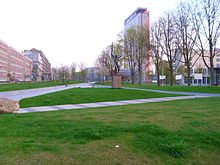
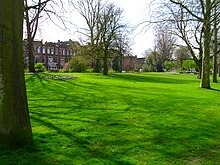







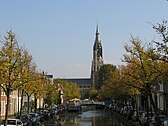
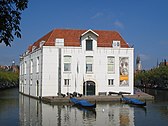

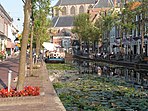











































































































































































































































































































































































































































No comments:
Post a Comment